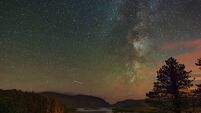The Burren: a magical place — but with eco pressures such as goat grazing
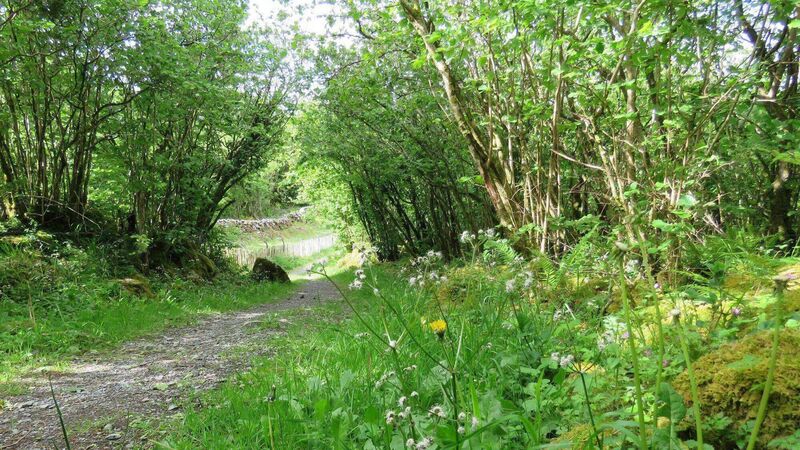
Wood sanicle and hazel line a wooded path leading to Cahercommaun fort. Picture: Burren National Park / NPWS
If someone from outside Ireland were to ask me where the best landscape in the country is to experience nature, I would have to say the Burren in County Clare. There are many parts of this extraordinary region where you can walk for hours and see only native forests and meadows of grasslands full of flowers and chirping insects.
This may be down to luck in large part, as the thin soils are not suitable for commercial forestry or intensive agriculture, there are no obvious invasive plants like rhododendron blighting the hillsides and no peatlands to be overgrazed or drained. But it is also down to design, as the people here have been at the heart of an impressive programme to preserve the region’s built, cultural and natural heritage for over 20 years.
Their innovative use of public funds to reward farmers for biodiversity and heritage conservation have won international acclaim. One of the founders of Burren Beo (a non-profit), Brendan Dunford, is fond of telling audiences that success has been due to its appeal to the head, the heart and the pocket.
The Burren is predominantly private land, owned and managed by farmers. However, within it is the publicly-owned Burren National Park I met with regional staff from the National Parks and Wildlife Service at their headquarters in Corofin, who updated me on their work.
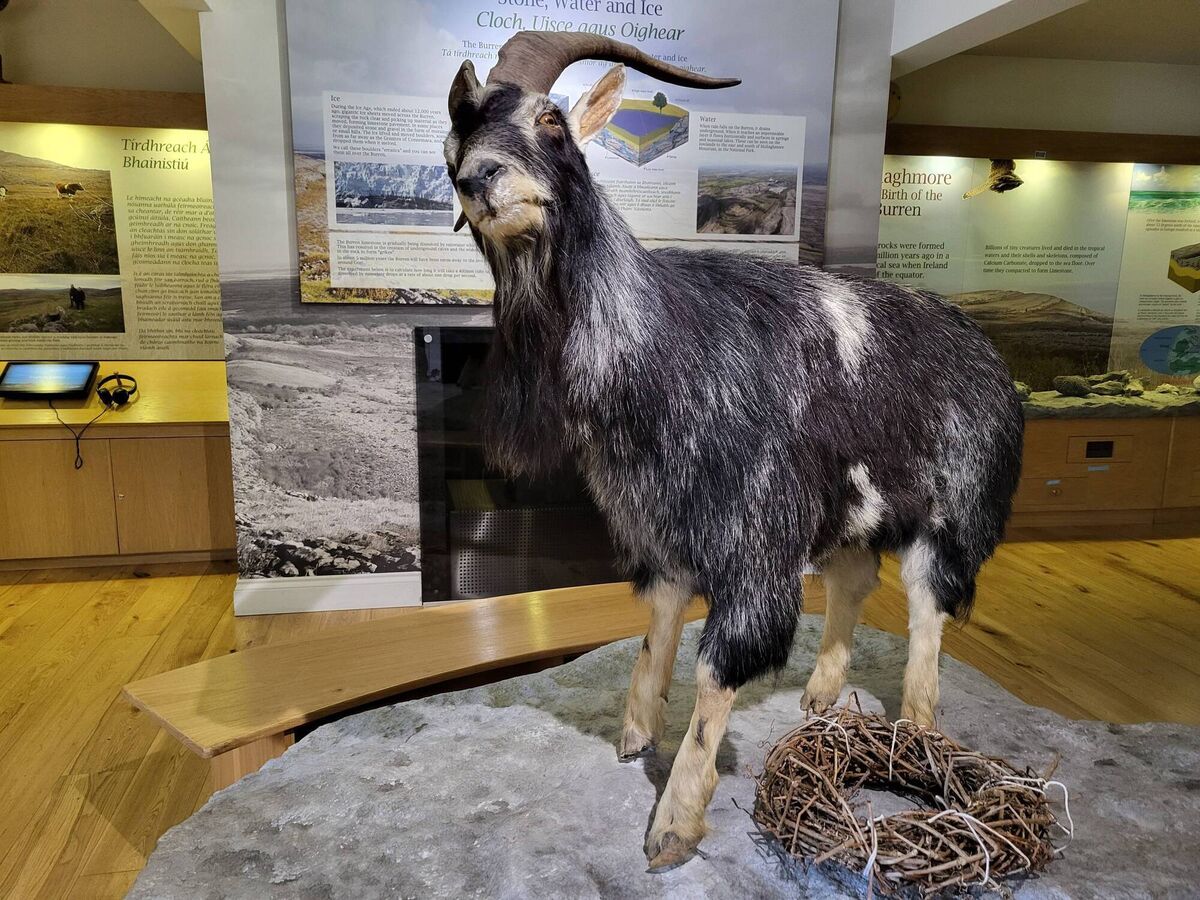
The first thing that meets a visitor in the small display at the Corofin centre is a goat. It is stuffed and raised on a platform in the centre of a display on the Park’s history and biodiversity.
You’ll also encounter goats on the information panels at trailheads where they feature under the heading ‘wildlife’ while a recent Instagram post from the National Park hails the herbivores as a “benefit [for] most Burren habitats since they help keep rank (old growth) grasses and hazel scrub at bay”.
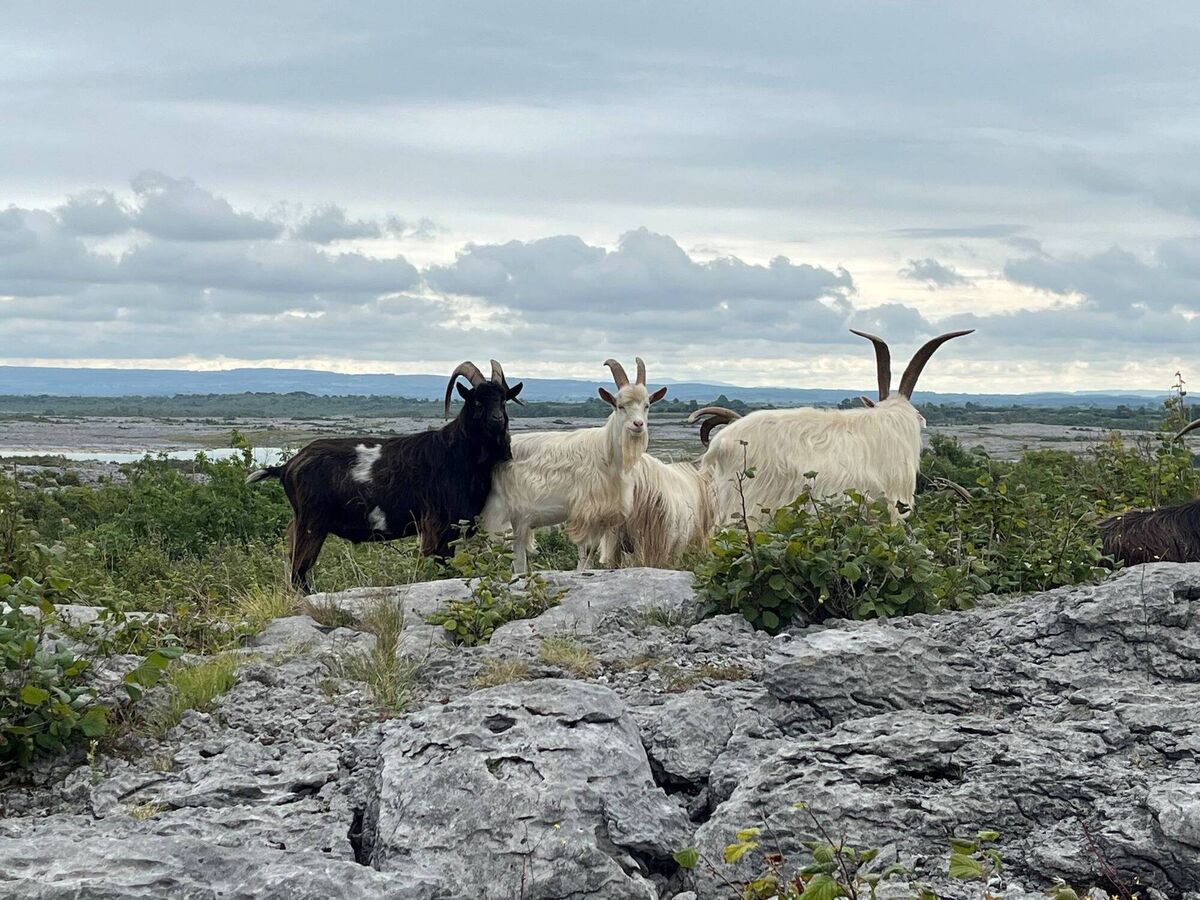
Feral goats are certainly distinctive animals, with their shaggy coats and spiral horns, but they are escaped domestic livestock, not wildlife. In many countries they are designated as an invasive species.
Park staff told me that, while there is no population data on the goats, there are “many thousands” and are increasing “exponentially”.
It is not apparent that goats are currently doing harm to the vegetation of the Burren although they are vectors of disease and they topple the old stone walls. However, this situation is unlikely to last with ever-increasing numbers. When this point is reached, we can expect the goats to overgraze the wildflower meadows and strip the bark from the hazel woodlands.
Astonishingly, there is currently no culling programme underway and this is something which must be a priority if the habitats are not to face disaster in the years to come.
Instead of a goat I would suggest that the brown bear would be a much better symbol of the Park, as the region is littered with their remains, albeit thousands of years old. Indeed, a golden opportunity awaits as the NPWS has planning permission for a new visitor centre, to be built in Corofin and where work is expected to start in 2026. It will provide a better visitor experience as well as facilities for staff, something that will be a boost also for the town.
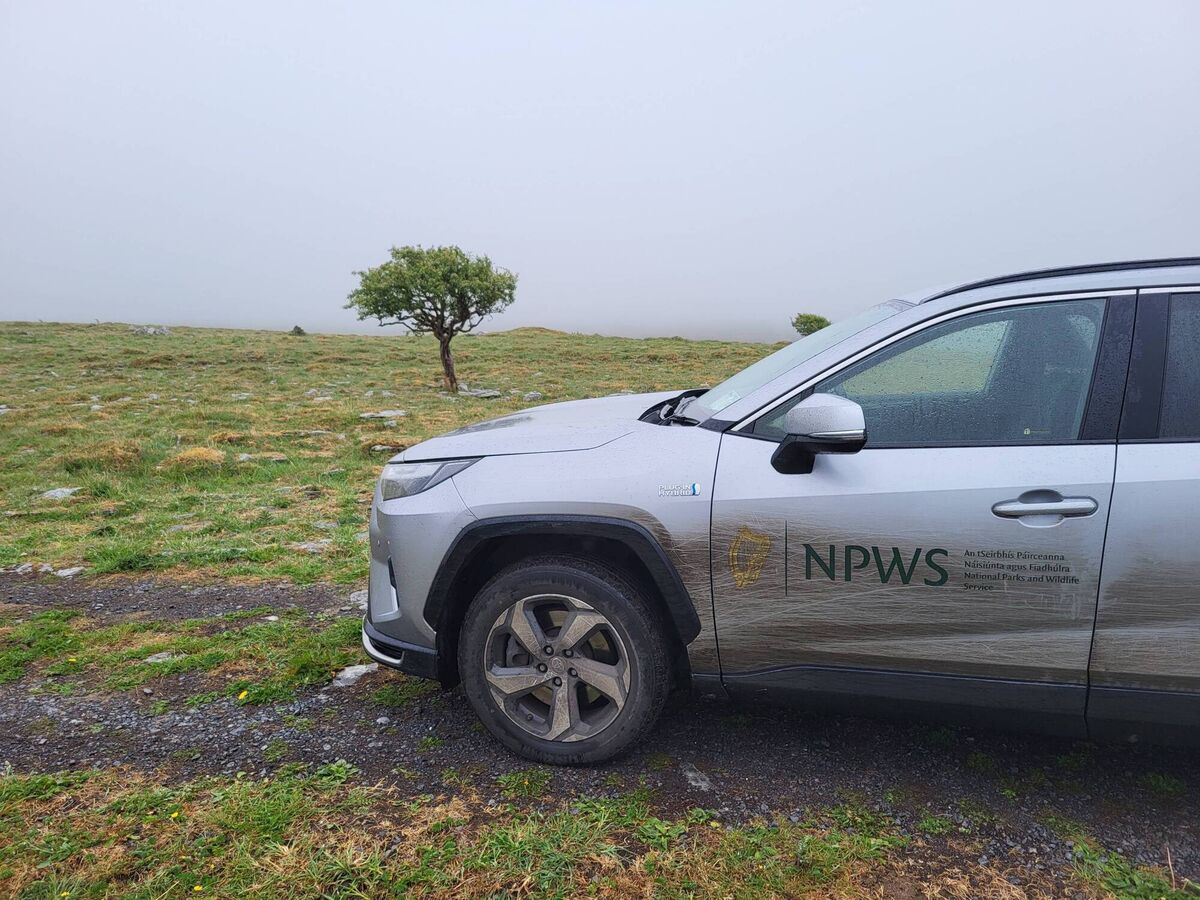
The NPWS has also recently acquired a 175-hectare farm which will expand the Park and bring additional areas of grassland and wetland of high biodiversity value into the boundary. Staff were amazed to discover (after sealing the purchase) the presence of hundreds of marsh fritillary butterfly, Ireland’s only protected insect, on the site. The acquisition brings facilities for Park workers as well plans for new walking trails in addition to opportunities for conservation. I was shown where a patch of blackthorn, a native shrub, was recently cleared in the hope that it will make way for flower-rich meadow.
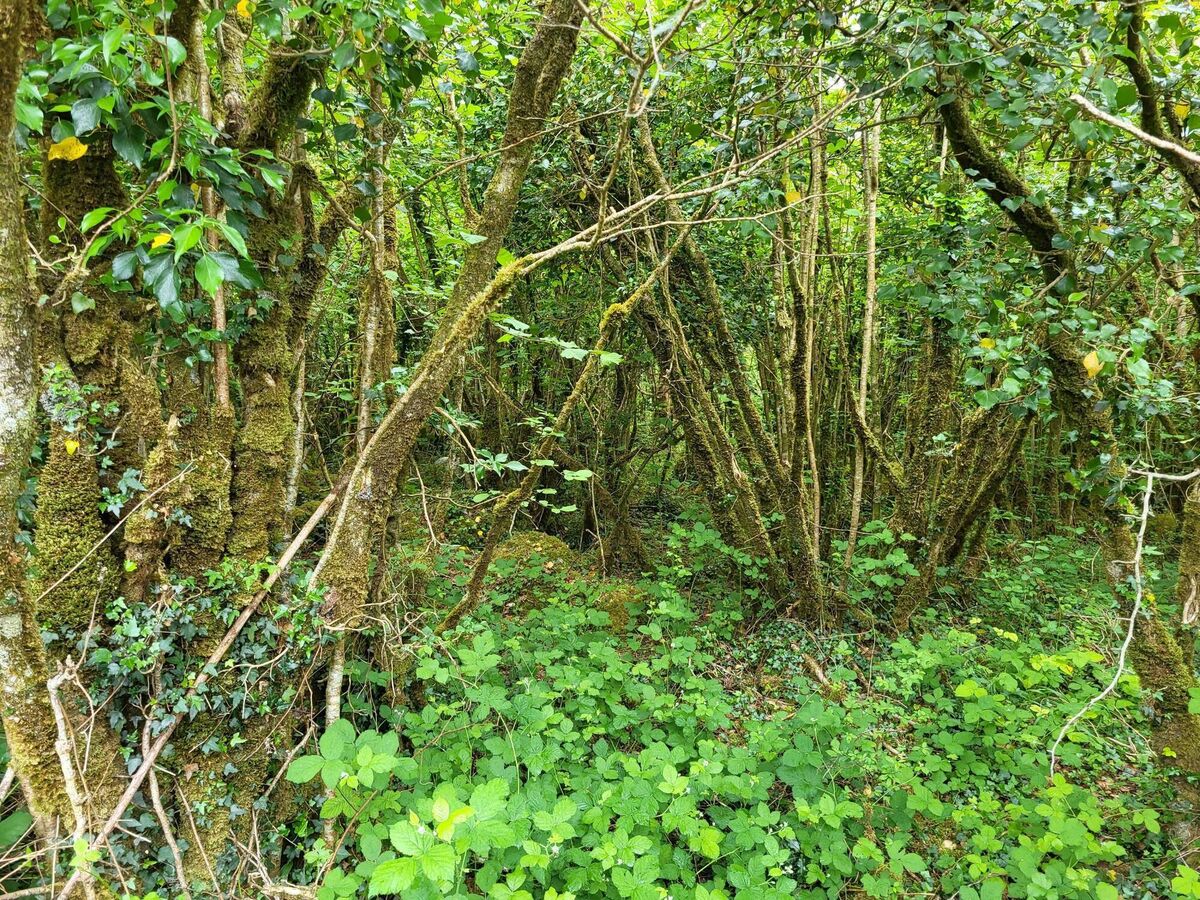
In fact, throughout the Park, one of the main preoccupations is the continual expansion of scrub, mostly hazel (a native tree) as a result of a reduction in livestock numbers, itself a symptom of an aging farmer population. As well as grazing from domestic cattle, staff use tools to cut the hazel down to stumps, which are then treated with glyphosate to kill them (brushed on rather than sprayed). I was told that this is a “never-ending battle”. Hazel scrub is a type of native woodland and mature areas of forest (which the NPWS assured me are not targeted for removal) are at least as rich in biodiversity as any of the flower-rich meadows.
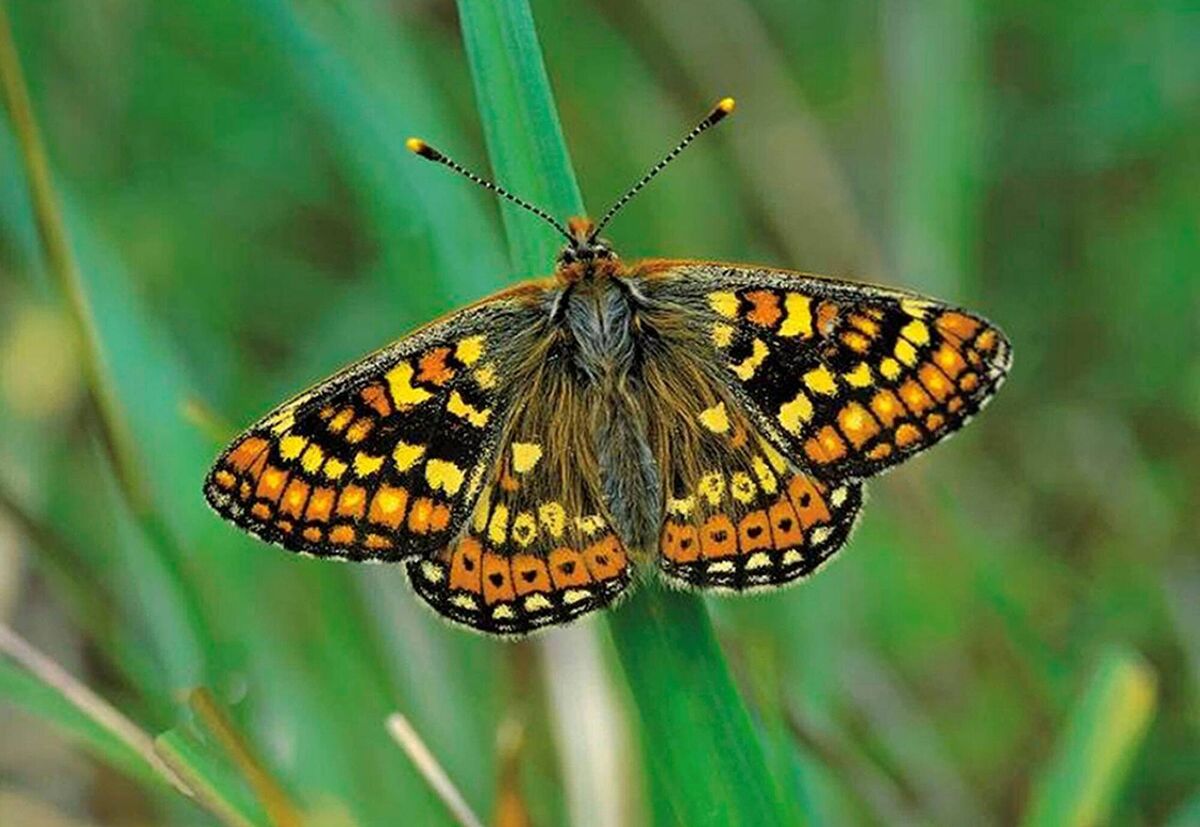
It seems odd that the spontaneous emergence of native forests is viewed as a problem and the use of herbicides in a National Park to kill off native trees has been a point of controversy for some time. Park staff feel they have no choice given that they are legally obliged to maintain the areas of flower-rich meadow (much of the Park lies with a Special Area of Conservation for their protection), although a similar result could be achieved with higher levels of grazing.
Perhaps more than any other of our National Parks, we see in the Burren a tension between opposing versions of nature: one that is man-made and closely hitched to an ancient farming tradition, and another that wants to free itself from the need for human interference. Who is to say that one is better than the other? For now, you can see both in this magical place.





